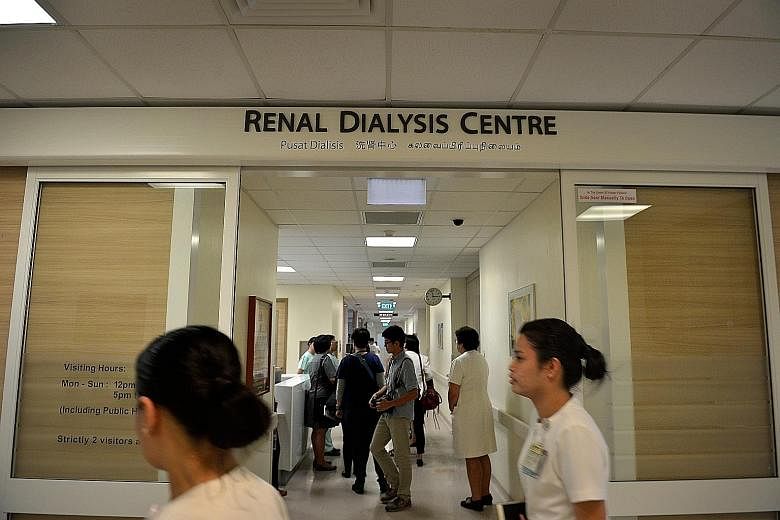The hepatitis C outbreak was not directly caused by nurses and doctors being overwhelmed by their workload, according to investigations so far.
Giving an update in Parliament, Minister of State for Health Chee Hong Tat said: "We're doing a very thorough review on how to improve infection control, and also to look at the detection and response to outbreaks."
Mr Chee, who is heading a task force set up in the wake of the hepatitis C outbreak at the Singapore General Hospital (SGH), added that investigations, so far, indicate that "workload has not been a direct cause of these infections".
He was responding to a question from Non-Constituency MP Leon Pereira, who asked if workload had contributed to the outbreak.
Last October, SGH said an outbreak of hepatitis C in its renal ward infected 22 patients. Three more cases were subsequently identified. In all, eight patients died.
Mr Pereira had originally asked for data to compare the workload faced by healthcare professionals in public hospitals here, with those in other developed countries.
Mr Chee said figures showed that the ratio of doctors to the population in Singapore was comparable with those in other countries.
Singapore had 21 doctors for every 10,000 people, which compared well with Hong Kong and Taiwan, both of which had 18 doctors for every 10,000 people, according to the Organisation for Economic Cooperation and Development.
As for nurses, Singapore's ratio in 2014 was 69 nurses for every 10,000 people, compared with Hong Kong, which had 66, and Taiwan, which had 60.
"While these ratios may provide a broad comparison across countries, we need to be mindful of the differences in healthcare demand, clinical practices and operating environments across different countries," said Mr Chee.
Mr Pereira agreed, saying: "The doctor-to-population ratio may not capture every relevant dimension to the issue. There are disease incidents, and caseloads may differ according to these incidents so, the doctor-to-population ratio may not be a perfect approximation of relative workload."
He asked if the Ministry of Health would consider conducting a benchmarking study to assess the relative caseload for doctors and nurses in Singapore, compared with other countries.
Mr Chee said there are other benchmarks to measure the well-being of staff, such as the employee engagement surveys, conducted in hospitals every two or three years.
He said: "This is used to gauge morale and job satisfaction. And we also use the survey results to further improve staff motivation, engagement and retention.
"In the latest survey that we have, seven out of eight of our hospitals have either higher or comparable job satisfaction scores, compared with the Singapore national norm."
Tan Weizhen

